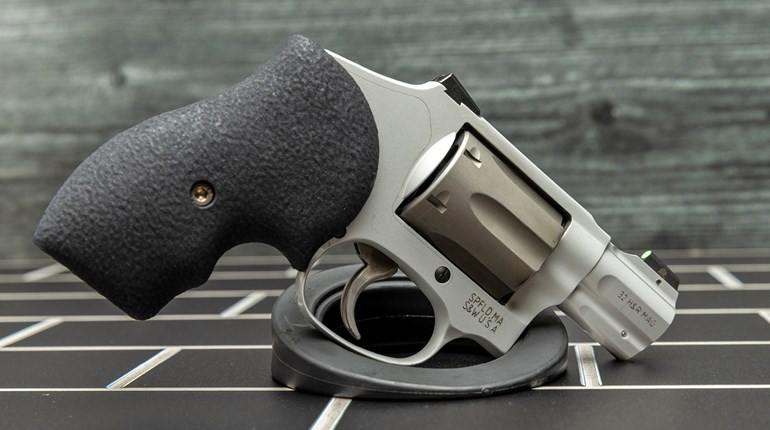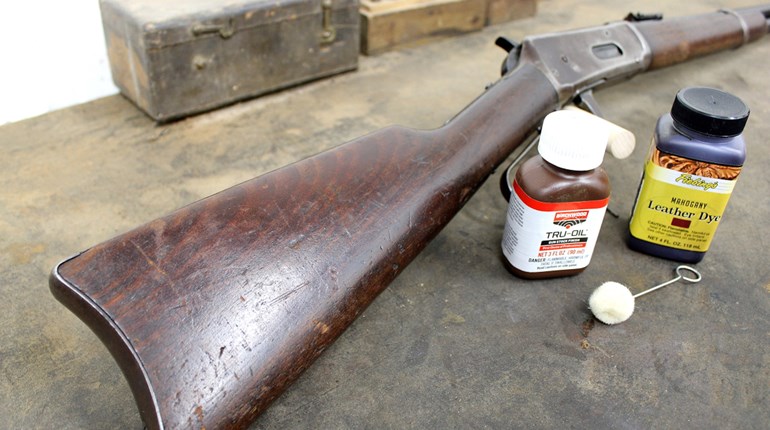
 “The Winchester .405 (M1895) is, at least for me personally, the medicine gun for lions.”
“The Winchester .405 (M1895) is, at least for me personally, the medicine gun for lions.”
—Theodore Roosevelt, Scribner’s Magazine (1910).
With that quote from the most gun-savvy President to ever occupy the Oval Office, Theodore Roosevelt endorsed the John M. Browning-designed Winchester lever-action rifle that became his favorite hunting companion in Africa and Brazil. Between 1895 and 1936, nearly 125,000 Model 1895s were made in various hunting and sporting configurations. What most don’t know about the venerable and celebrated hunting favorite of his is that the vast majority of the total production of 425,000 rifles and carbines were made in 7.62x54 mm R and sold as military rifles to the Tsar of Russia. Some 10,000 others were made for the U.S. Army in 1898 and used during the Spanish-American War. Others were made for various state-militia units and some were specially made for the competitions at the National Matches.
Browning’s fertile mind conceived of the Model 1895 at a time when cartridge dynamics were changing daily in the shooting world. Oliver Winchester’s lever-action-rifle empire had been built around lever-action, repeating rifles firing a blackpowder pistol cartridge. The need for a serious hunting round resulted in the upscaled Models of 1876 and 1886 that could handle cartridges in powerful calibers like .45-70 Gov’t. and .50-100 Express.
The transition to smokeless powders in the early 1880s challenged cartridge designers to find high-power rounds that easily outperformed the old blackpowder cartridges. The era of the .30-caliber (7.62 mm) cartridge was born, and remains to this day. The change in propellant also initiated the change in projectile design. The spitzer, or pointed, bullet provided increased stability and accuracy, but, as the French military found out with the adoption of the pointed 8 mm Lebel round in 1886, a pointed bullet in a tubular magazine where one round was seated behind the other might prove disastrous if the primer was ignited by the following round. Enter John M. Browning.
His design was the first lever-action rifle to use a box-style magazine. Although it soon found advocates in the hunting world, it was hoped that it would find a real home in the armed forces of the military. Just as the war with Spain broke out in April, 1898, the
U.S. Army contracted for 10,000 rifles with 28-inch barrels in .30-40 Krag. Some carbines with 22-inch barrels also underwent field trials, but difficulties in loading the inline box magazine proved to be beyond the understanding of those using them in the Philippines at the time. To load the rounds, one had to stand the cartridge upright, press it downward into the magazine and cant it forward to seat it in place. This had to be repeated five times to load the magazine to capacity. The Krag-Jørgensen, on the other hand, had a side-loading box magazine that allowed the user to just dump five loose cartridges into the box and close the side door—much simpler for the average recruit. The Model 1895 was met with almost universal disdain, and the U.S. Commander in the Philippines, LTG Arthur MacArthur, Jr., sent the 100 rifles assigned to him for field trials back to the Springfield Armory with a tersely worded letter of rejection for them.
One of the first military uses of the Model 1895 came during the Battle of Kettle and San Juan Hills in Cuba on July 1, 1895. COL Theodore Roosevelt of the 1st US Volunteer Cavalry (the Rough Riders) took his M1895 carbine, chambered in .30-40 Krag, to Cuba with him and loaned it out to Trooper Bob Wrenn, who carried it into battle.

The rejected U.S. rifles were sold commercially, and some were subsequently purchased by the Kentucky, Colorado and New York National Guards and used up until the American entry into World War I in 1917. Some are known to have found their way south of the border and into the hands of Pancho Villa’s revolutionaries, where they saw service during the Mexican Revolution. The 22-inch carbine Model 1895 was considered quite the handy rifle, and soon law enforcement organizations in Colorado, Arizona and the Texas Rangers adopted them for use well into the pre-World War II era. Plenty of dramatically posed photographs of Rangers with their prized 1895s abound in books on their exploits.
As the NRA National Matches began to become an annual event at Camp Perry, OH, in 1907, Winchester made a 24-inch-barrel, military-style rifle with a shotgun-style buttplate and Model 1901 Krag sights for use in the competitions. Chambered in .30-40 Krag and .30-’06 Sprg., the NRA Musket was one of a small number of commercially made firearms specifically manufactured for match use.
The M1895 was chambered in a wide variety of cartridges: .30-03, .30-’06 Sprg., .30-40 Krag, .303 British, .35 WCF, .38-72, .405 Win. and .40-72, but of the 425,000 Model 1895s manufactured, nearly 300,000 were chambered in 7.62x54 mm R. This was due to the largest military contract Winchester ever had for a lever-action rifle in the company’s history. The Russian government placed the order in 1915, as it desperately needed firearms to supplement the bolt-action Mosin-Nagant Model 1891 that could not be manufactured quick enough to supply its troops embroiled in the Great War.
The Russian M1895 rifle found a happy home with the Tsar‘s troops, as Winchester had fixed the loading problem by adopting a charger bridge or stripper-clip guide similar to the style used on the British No. 1 Mk III SMLE rifles. This allowed the user to insert the exact-same stripper clip of 7.62x54 mmR ammo used in the 1891 Mosin-Nagant into the Winchester.
After Russia collapsed and was taken over by the Bolsheviks, the rifles went into storage and saw limited use until Russia began to support the Spanish Republicans during the Spanish Civil War from 1936 to 1939. In 1937, some 9,000 Model 1895s were shipped to Republican forces in Spain and marked with a flaming bomb and MP8 cartouche in the stock. Author Bruce Canfield has even identified a U.S. Military rifle of the 1898 contract that went to Mexico and then to Spain in 1936 marked with the same cartouche. Their use in Spain in the late 1930s seems to be the last of the military use of these iconic rifles in history, and many of the rifles found their way back to the United States via Interarms importing them in the 1960s. They can still be found occasionally at local gun shows and online auctions.
So, the Winchester Model 1895 was not only “big medicine for lions,” but it was at San Juan Hill, the conquest of the Philippines, the National Matches at Camp Perry, the trenches of the Western and Eastern Fronts of World War I as well as the hideous turmoil of the Spanish Civil War. Today, at least to this author, it remains the most interesting of all firearms produced in New Haven, CT, by the Winchester Repeating Arms Company.






































